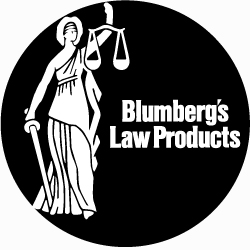 Savvy lawyers use marketing since reputation and contacts don’t always provide a steady stream of clients,. At its Annual Meeting in August 2018, the American Bar Association boosted marketing by amending its model rules on lawyer advertising to loosen restrictions, recognize technologies, and promote uniformity among states. The amended rules modify the ABA’s 110-year old ban on advertising by lawyers. Read on for a short history of the ABA’s advertising rules, a summary of the ways they have been amended, and a list of resources to help you market your professional services.
Savvy lawyers use marketing since reputation and contacts don’t always provide a steady stream of clients,. At its Annual Meeting in August 2018, the American Bar Association boosted marketing by amending its model rules on lawyer advertising to loosen restrictions, recognize technologies, and promote uniformity among states. The amended rules modify the ABA’s 110-year old ban on advertising by lawyers. Read on for a short history of the ABA’s advertising rules, a summary of the ways they have been amended, and a list of resources to help you market your professional services.
The ABA adopted its advertising ban in 1908 to protect consumers against unscrupulous lawyers. The ban continued until it was eroded by several decades of court decisions and challenges by federal agencies. The erosion began with the 1977 Bates case when the U.S. Supreme Court established that lawyers have a First Amendment right to advertise. Additional change came with the 1985 Shapero case when the Supreme Court recognized that lawyers have a right to send marketing mailings to potential clients. More recently, the courts and the Federal Trade Commission have pressed bar regulators to further modify their advertising rules to promote competition and provide greater access to information about lawyers.
The ABA’s recent amendment of its lawyer advertising rules transforms the regulation of lawyer marketing.
The amendments focus on barring false and misleading statements instead of micro-regulating marketing activities. The ABA is hopeful that the new rules will promote uniformity among the states. Following is a summary of the most significant changes:
- Simplification – The prohibitions against false and misleading communications have been consolidated into Rule 7.1. The standards governing firm names and designations have been streamlined.
- Contact – The requirement for contact information in advertising was liberalized to allow use of a lawyer’s phone number, e-mail address, or website.
- Solicitation – Person-to-person solicitation (e.g. calls, chats, and meetings) continues to be prohibited, but an exception was added to permit soliciting work from experienced business clients like in-house counsel. An exception was also made to permit lawyers to give nominal thank you gifts to those who refer clients. An additional exception was made to permit real-time electronic solicitations (i.e. texting and tweeting).
- Mailings – The word “Advertisement” is no longer required to be used on marketing mailings, but mailings must not be misleading or involve coercion, duress, or harassment. Also, mailings may not be sent to persons who have opted not to receive them.
Resources
See the seminal article in the Harvard Business Review for an introduction to the principles of professional services marketing. For background on ethical concerns, see the ABA memorandum about its new rules and also see the McGuire Woods memorandum about state rules. To implement marketing, see the ABA’s practical books on blogging, directories, ethics, referrals, websites, strategies, tools, and tactics. Additional resources include the many articles, blogs, newsletters, and professional organizations that focus on marketing legal services.
Conclusion
The ABA’s new advertising rules underscore the importance of marketing to a successful law practice. The ABA is hopeful that state regulators will promptly adopt the new rules to make marketing easier and eliminate inconsistencies between states. Meantime, many marketing activities are already permitted by existing state rules. For example, lawyers commonly use printed marketing materials like business cards and law firm brochures. It is also common practice to use electronic marketing tools like online directories and websites. Consult the resources mentioned in this article to use marketing activities to enhance the profitability of your law practice.
